Dutch Golden Age
Part of a series on the |
|---|
| History of the Netherlands |
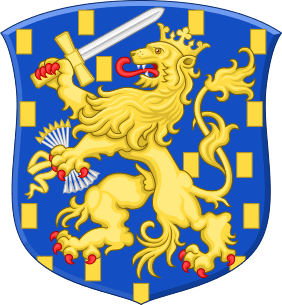 |
|
|
The Dutch Golden Age (Dutch: Gouden Eeuw [ˈɣʌu̯də(n) ˈeːu̯]) was a period in Dutch history, roughly spanning the 17th century, in which Dutch trade, science, military, and art were among the most acclaimed in the world. The first half is characterized by the Eighty Years' War which ended in 1648. The Golden Age continued in peacetime during the Dutch Republic until the end of the century.
The Netherlands's transition from a possession of the Holy Roman Empire in the 1590s to the foremost maritime and economic power in the world has been called the "Dutch Miracle" by historian K. W. Swart.[1]
Causes of the Golden Age

In 1568, the Seven Provinces that later signed the Union of Utrecht (Dutch: Unie van Utrecht) started a rebellion against Philip II of Spain that led to the Eighty Years' War. Before the Low Countries could be completely reconquered, a war between England and Spain, the Anglo-Spanish War of 1585-1604, broke out, forcing Spanish troops to halt their advances and leaving them in control of the important trading cities of Bruges and Ghent, but without control of Antwerp, which was then arguably the most important port in the world. Antwerp fell on August 17, 1585 after a siege, and the division between the Northern and Southern Netherlands (the latter mostly modern Belgium) was established.
The United Provinces (roughly today's Netherlands) fought on until the Twelve Years' Truce, which did not end the hostilities. The Peace of Westphalia in 1648, which ended the Eighty Years' War between the Dutch Republic and Spain and the Thirty Years' War between other European superpowers, brought the Dutch Republic formal recognition and independence from the Spanish crown.
Migration of skilled workers to Netherlands
.jpg)
Under the terms of the surrender of Antwerp in 1585, the Protestant population (if unwilling to reconvert) were given four years to settle their affairs before leaving the city and Habsburg territory.[2] Similar arrangements were made in other places. Protestants were especially well-represented among the skilled craftsmen and rich merchants of the port cities of Bruges, Ghent, and Antwerp. More moved to the north between 1585 and 1630 than Catholics moved in the other direction, although there were also many of these. Many of those moving north settled in Amsterdam, transforming what was a small port into one of the most important ports and commercial centres in the world by 1630.
In addition to the mass migration of natives from the Southern Netherlands, there were also significant influxes of non-native refugees who had previously fled from religious persecution, particularly Sephardi Jews from Portugal and Spain, and later Huguenots from France. The Pilgrim Fathers also spent time there before their voyage to the New World.
Cheap energy sources
.jpg)
Several other factors also contributed to the flowering of trade, industry, the arts and the sciences in the Netherlands during this time. A necessary condition was a supply of cheap energy from windmills and from peat, easily transported by canal to the cities. The invention[3] of the sawmill enabled the construction of a massive fleet of ships for worldwide trading and for military defense of the republic's economic interests.
Birth and wealth of corporate finance
_van_het_Amsterdamse_lakenbereidersgilde_-_Google_Art_Project.jpg)
In the 17th century the Dutch — traditionally able seafarers and keen mapmakers — began to trade with the Far East and as the century wore on, they gained an increasingly dominant position in world trade, a position previously occupied by the Portuguese and Spanish.[4]
In 1602 the Dutch East India Company (Dutch: Verenigde Oostindische Compagnie or VOC) was founded. It was the first-ever multinational corporation, financed by shares that established the first modern stock exchange. This company received a Dutch monopoly on Asian trade and would keep this for two centuries. It became the world's largest commercial enterprise of the 17th century. Spices were imported in bulk and brought huge profits, due to the efforts and risks involved and seemingly insatiable demand. This is remembered to this day in the Dutch word peperduur (as expensive as pepper), meaning something is very expensive, reflecting the prices of spices at the time. To finance the growing trade within the region, the Bank of Amsterdam was established in 1609, the precursor to, if not the first true central bank.[5]
Monopoly on trade with Japan
Amsterdam's dominant position as a trade centre was strengthened in 1640 with a monopoly for the Dutch East India Company (VOC) for trade with Japan through its trading post on Dejima, an island in the bay of Nagasaki. From here the Dutch traded between China and Japan and paid tribute to the Shogun. Until 1854, the Dutch were Japan's sole window to the western world. The collection of scientific learning introduced from Europe became known in Japan as Rangaku or Dutch Learning. The Dutch were instrumental in transmitting to Japan some knowledge of the industrial and scientific revolution then occurring in Europe. The Japanese purchased and translated numerous scientific books from the Dutch, obtained from them Western curiosities and manufactures (such as clocks) and received demonstrations of various Western innovations (such as electric phenomena, and the flight of a hot air balloon in the early 19th century). In the 17th and 18th centuries, the Dutch were arguably the most economically wealthy and scientifically advanced of all European nations, which put them in a privileged position to transfer Western knowledge to Japan.
European Great Power

The Dutch also dominated trade between European countries. The Low Countries were favorably positioned at a crossing of east-west and north-south trade routes, and connected to a large German hinterland through the Rhine river. Dutch traders shipped wine from France and Portugal to the Baltic lands and returned with grain for countries around the Mediterranean Sea. By the 1680s, an average of nearly 1000 Dutch ships entered the Baltic Sea each year,[6] to trade with markets of the fading Hanseatic League. The Dutch were able to gain control of much of the trade with the nascent English colonies in North America; and after the end of war with Spain in 1648, Dutch trade with that country also flourished.
Other industries
National industries expanded as well. Shipyards and sugar refineries are prime examples. As more and more land was utilized, partially through transforming lakes into polders such as the Beemster, Schermer and Purmer, local grain production and dairy farming soared.
National consciousness
The outcome of the revolt against Spain, better known as the Eighty Years' War, that had been fought over religious freedom and economic and political independence, and ended in total independence of the reformist northern provinces (see also Dutch Republic), almost certainly would have boosted national morale. Already in 1609 much of this was accomplished, when a temporary truce was signed with Spain, which would last for 12 years.
Social structure
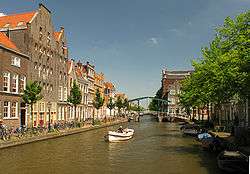
In the Netherlands in the 17th century, social status was largely determined by income. The landed nobility had relatively little importance, since they mostly lived in the more underdeveloped inland provinces, and it was the urban merchant class that dominated Dutch society. The clergy did not have much worldly influence either: the Roman Catholic Church had been more or less suppressed since the onset of the Eighty Years' War with Spain. The new Protestant movement was divided, although exercising social control in many areas to an even greater extent than under the Catholic Church.
That is not to say that aristocrats were without social status. On the contrary, wealthy merchants bought themselves into the nobility by becoming landowners and acquiring a coat of arms and a seal. Aristocrats also mixed with other classes for financial reasons: they married their daughters to wealthy merchants, became traders themselves or took up public or military office. Merchants also started to value public office as a means to greater economic power and prestige. Universities became career pathways to public office. Rich merchants and aristocrats sent their sons on a so-called Grand Tour through Europe. Often accompanied by a private tutor, preferably a scientist himself, these young people visited universities in several European countries. This intermixing of patricians and aristocrats was most prominent in the second half of the century.

After aristocrats and patricians came the affluent middle class, consisting of Protestant ministers, lawyers, physicians, small merchants, industrialists and clerks of large state institutions. Lower status was attributed to farmers, craft and tradesmen, shopkeepers, and government bureaucrats. Below that stood skilled laborers, maids, servants, sailors, and other persons employed in the service industry.
_-_WGA22404.jpg)
At the bottom of the pyramid were "paupers": impoverished peasants, many of whom tried their luck in a city as a beggar or day laborer.
Because of the importance of wealth in defining social status, divisions between classes were less sharply defined and social mobility was much greater than elsewhere. Calvinism, which preaches humility as an important virtue, also tended to diminish the importance of social differences. These tendencies have proved remarkably persistent: modern Dutch society, though much more secularized, is still considered by many to be remarkably egalitarian. Despite less income inequality than in other European countries, the difference between a dockworker's one-room hovel and a great merchant's mansion in Amsterdam was so obvious as to require no commentary.
Workers and laborers were generally paid better than in most of Europe, and enjoyed relatively high living standards, although they also paid higher than normal taxes. Farmers prospered from mainly cash crops needed to support the urban and seafaring population.
Religion

Calvinism was the state religion in the Dutch Republic. This does not imply that unity existed. Although the Netherlands was a tolerant nation compared to neighboring states, wealth and social status belonged almost exclusively to Protestants. The cities with a predominantly Catholic background, such as Utrecht and Gouda, did not enjoy the benefits of the Golden Age. As for the Protestant towns, unity of belief was also far from standard. In the beginning of the century bitter controversies between strict Calvinists and more permissive Protestants, known as Remonstrants, split the country. The Remonstrants denied predestination and championed freedom of conscience, while their more dogmatic adversaries (known as Contra-Remonstrants) gained a major victory at the Synod of Dort (1618–19). The variety of sects may well have worked to make religious intolerance impractical.
Renaissance Humanism, of which Desiderius Erasmus (c. 1466–1536) was an important advocate, had also gained a firm foothold and was partially responsible for a climate of tolerance.
Tolerance towards Catholics was not so easy to uphold, as religion had played an important part in the Eighty Years' War of independence against Spain (with political and economic freedom being other important motives). Intolerant inclinations could however be overcome by money. Thus Catholics could buy the privilege of holding ceremonies in a conventicle (a house doubling inconspicuously as a church), but public offices were out of the question. Catholics tended to keep to themselves in their own section of each town, even though they were one of the largest single denominations: for example, the Catholic painter Johannes Vermeer lived in the "Papist corner" of the town of Delft. The same applied to Anabaptists and Jews.
Overall, the country was tolerant enough to attract religious refugees from other countries, notably Jewish merchants from Portugal who brought much wealth with them. The revocation of the Edict of Nantes in France in 1685 resulted in the immigration of many French Huguenots, many of whom were shopkeepers or scientists. However some figures, such as the philosopher Baruch de Spinoza (1632–1677) experienced social stigma.
Science
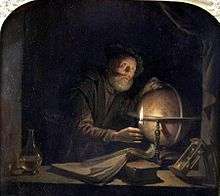
Due to its climate of intellectual tolerance, the Dutch Republic attracted scientists and other thinkers from all over Europe. In particular, the renowned University of Leiden (established in 1575 by the Dutch stadtholder Willem van Oranje as a token of gratitude for Leiden's fierce resistance against Spain during the Eighty Years' War) became a gathering place for intellectuals. Jan Amos Comenius, the Czech educator and writer, was known for his theories of education, but also as a pioneer of Czech Protestantism during the 17th century. To escape the Counter-Reformation, he migrated to the Dutch Republic and is buried in Naarden, North Holland. Comenius accepted the invitation of Laurens de Geer to visit Amsterdam, where he lived the last 14 years of his life (1656-1670). He published his most important works there: 43 volumes in all, about half of his total output. French philosopher and mathematician René Descartes (1596-1650) lived in Holland from 1628 until 1649. He also had his most important works published in Amsterdam and Leiden. Another French-born philosopher, Pierre Bayle, left France in 1681 for the Dutch Republic, where he became professor of history and philosophy at the Illustrious School of Rotterdam. He lived in Rotterdam until his death in 1706. As Bertrand Russell noted in his A History of Western Philosophy (1945), "He [Descartes] lived in Holland for twenty years (1629-49), except for a few brief visits to France and one to England, all on business. It is impossible to exaggerate the importance of Holland in the seventeenth century, as the one country where there was freedom of speculation. Hobbes had to have his books printed there; Locke took refuge there during the five worst years of reaction in England before 1688; Bayle (of the Dictionary) found it necessary to live there; and Spinoza would hardly have been allowed to do his work in any other country."
Dutch lawyers were famous for their knowledge of international law of the sea and commercial law. Hugo Grotius (1583–1645) played a leading part in the foundation of international law. He invented the concept of the "Free seas" or Mare liberum, which was fiercely contested by England, the Netherlands' main rival for domination of world trade. He also formulated laws on conflicts between nations in his book De iure belli ac pacis ("On law of war and peace").
._Natuurkundige_te_Delft_Rijksmuseum_SK-A-957.jpeg)
Christiaan Huygens (1629–1695) was a famous astronomer, physicist and mathematician. He invented the pendulum clock, which was a major step forward towards exact timekeeping. Among his contributions to astronomy was his explanation of Saturn's planetary rings.[7] He also contributed to the field of optics. The most famous Dutch scientist in the area of optics is Anton van Leeuwenhoek, who was the first to methodically study microscopic life—he was the first person to describe bacteria—thus laying the foundations for the field of microbiology.[8] The "microscopes" were simple magnifiers, not compound microscopes.[9] His skill in grinding lenses (some as small as 1mm in diameter) resulted in a magnification as high as 245x. Today, grinding and polishing is done with machinery or in-house tooling to create optics for microscopes and other optics.[10]
Famous Dutch hydraulic engineer Jan Leeghwater (1575–1650) gained important victories in the Netherlands' eternal battle against the sea. Leeghwater added a considerable amount of land to the republic by converting several large lakes into polders, pumping the water out with windmills.
Again due to the Dutch climate of tolerance, book publishers flourished. Many books on religion, philosophy and science that might have been deemed controversial abroad were printed in the Netherlands and secretly exported to other countries. Thus during the 17th century the Dutch Republic became more and more Europe's publishing house.
Culture
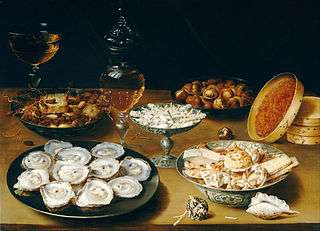
The Low Countries witnessed a cultural development that stood out from neighbouring countries. With some exceptions (notably Dutch playwright Joost van den Vondel) the Baroque movement did not gain much influence. Its exuberance did not fit the austerity of the largely Calvinistic population.
The major force behind new developments was the citizenry, notably in the western provinces: first and foremost in Holland, to a lesser extent Zeeland and Utrecht. Where rich aristocrats often became patrons of art in other countries, because of their comparative absence in the Netherlands this role was played by wealthy merchants and other patricians.
Centres of cultural activity were town militia (Dutch: schutterij) and chambers of rhetoric (rederijkerskamer). The former were created for town defence and policing, but also served as a meeting-place for the well-to-do, who were proud to play a prominent part and paid well to see this preserved for posterity by means of a group portrait. The latter were associations at a city level that fostered literary activities, like poetry, drama and discussions, often through contests. Cities took pride in their associations and promoted them.
During the 17th century the urban merchant class dominated Dutch society, an affluent middle class. The 17th century brought great prosperity to the Netherlands. In the Dutch Golden Age, the meals of the middle class were enriched to consisted of a rich variety of dishes.[11][12] During the 15th century haute cuisine began to emerge, largely limited to the aristocracy, but from the 17th century onward dishes of this kind became available to the wealthy citizens as well. The Dutch Empire enabled spices, sugar, and exotic fruits to be imported to the country. By the late 17th century, tea and coffee consumption were increasing and becoming part of everyday life. Tea was served with sweets, candy or marzipan and cookies.[13] A rich Dutch mealtime of the time contained many extravagant dishes and drinks.[14]
Painting

Dutch Golden Age painting followed many of the tendencies that dominated Baroque art in other parts of Europe, such as Caravaggesque and naturalism, but was the leader in developing the subjects of still life, landscape, and genre painting. Portraiture was also popular, but History painting — traditionally the most-elevated genre struggled to find buyers. Church art was virtually non-existent, and little sculpture of any kind was produced. While art collecting and painting for the open market was also common elsewhere, art historians point to the growing number of wealthy Dutch middle-class and successful mercantile patrons as driving forces in the popularity of certain pictorial subjects.[15]
This trend, along with the lack of Counter-Reformation church patronage that dominated the arts in Catholic Europe, resulted in the great number of "scenes of everyday life" or genre paintings, and other secular pictures. Landscapes and seascapes, for example, reflect the land reclaimed from the sea and the sources of trade and naval power that mark the Republic's Golden Age. One subject that is quite characteristic of Dutch Baroque painting is the large group portrait, especially of civic and militia guilds, such as Rembrandt van Rijn's Night Watch. A special genre of still life was the so-called pronkstilleven (Dutch for 'ostentatious still life'). This style of ornate still-life painting was developed in the 1640s in Antwerp by Flemish artists such as Frans Snyders, Osias Beert, Adriaen van Utrecht and a whole generation of Dutch Golden Age painters. They painted still lifes that emphasized abundance by depicting a diversity of objects, fruits, flowers and dead game, often together with living people and animals. The style was soon adopted by artists from the Dutch Republic.[16]
Today, the best-known painters of the Dutch Golden Age are the period's most dominant figure Rembrandt, the Delft master of genre Johannes Vermeer, the innovative landscape painter Jacob van Ruisdael, and Frans Hals, who infused new life into portraiture. Some notable artistic styles and trends include Haarlem Mannerism, Utrecht Caravaggism, the School of Delft, the Leiden fijnschilders, and Dutch classicism.
Architecture
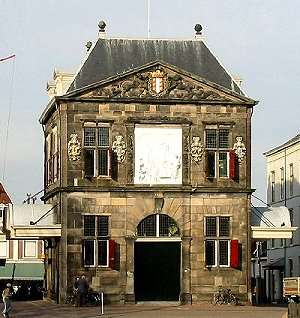
Dutch architecture was taken to a new height in the Golden Age. Cities expanded greatly as the economy thrived. New town halls, weighhouses and storehouses were built. Merchants who had made their fortune ordered a new house along one of the many new canals that were dug out in and around many cities (for defense and transport purposes), a house with an ornamented façade that befitted their new status. In the countryside, many new castles and stately homes were built; but most of them have not survived.
Early in the 17th century late Gothic elements still prevailed, combined with Renaissance motives. After a few decades French classicism gained prominence: vertical elements were stressed, less ornamentation was used, natural stone was preferred above bricks. In the last decades of the century this trend towards sobriety intensified. From around 1670 the most prominent feature of a house front was its entrance, with pillars on each side and possibly a balcony above it, but no further decoration.
Starting at 1595, Reformed churches were commissioned, many of which are still landmarks today.
The most famous Dutch architects of the 17th century were Jacob van Campen, Pieter Post, Pieter Vingbooms, Lieven de Key, and Hendrick de Keyser.
Sculpture
17th century Dutch achievements in sculpture are less prominent than in painting and architecture, and fewer examples were created than in neighbouring countries: partly because of their absence in the interiors of Protestant churches, objections to the Roman Catholic veneration of statues having been one of the contentious points of the Reformation. Another reason was the comparatively small class of nobles. Sculptures were commissioned for government buildings, private buildings (often adorning house fronts) and the exteriors of churches. There was also a market for grave monuments and portrait busts.
Hendrick de Keyser, who was active at the dawn of the Golden Age, is one of the few prominent home-grown sculptors. In the 1650s and 1660s, the Flemish sculptor Artus I Quellinus, along with his family and followers like Rombout Verhulst, were responsible for the classicizing decorations for the Amsterdam city hall (now the Royal Palace, Amsterdam). This remains the major monument of Dutch Golden Age sculpture.
Literature
The Golden Age was also an important time for developments in literature. Some of the major figures of this period were Gerbrand Bredero, Jacob Cats, Pieter Hooft, and Joost van den Vondel.
See also
- First Stadtholderless Period
- Tulip mania
- Flemish painting
- Vermeer's Hat: The Seventeenth Century and the Dawn of the Global World
Notes
- ↑ London: published for the College by H. K. Lewis, [1969] and available online http://www.dianamuirappelbaum.com/?p=583
- ↑ Boxer Charles Ralph, The Dutch seaborne empire, 1600–1800, p. 18, Taylor & Francis, 1977 ISBN 0-09-131051-2, ISBN 978-0-09-131051-6 Google books
- ↑ Saag Molens were invented in Uitgeest, according to the "Haarlemmermeer boeck" by Jan Adriaanszoon Leeghwater
- ↑ The maps used by Fernando Álvarez de Toledo, 3rd Duke of Alba to attack Dutch cities were made by Dutch mapmakers.
- ↑ Quinn, Stephen. Roberds, William. The Big Problem of Large Bills: The Bank of Amsterdam and the Origins of Central Banking. August, 2005.
- ↑ Baltic Connections: Mercantilism in the West Baltic
- ↑ Bond, Peter (2010). Distant Worlds: Milestones in Planetary Exploration (illustrated ed.). Springer Science & Business Media. p. 186. ISBN 978-0-387-68367-6. Extract of page 186
- ↑ Burgess, Jeremy; Marten, Michael; Taylor, JRosemary (190). Under the Microscope: A Hidden World Revealed (illustrated ed.). CUP Archive. p. 186. ISBN 978-0-521-39940-1. Extract of page 186
- ↑ "Antony van Leeuwenhoek". www.ucmp.berkeley.edu. Retrieved 2016-02-19.
- ↑ "Optical Polishing & Lens Grinding Services - United Lens". United Lens. Retrieved 2016-02-19.
- ↑ WereldExpat: De rijke Hollandse dis
- ↑ Gastronomie: De Nederlandse keuken
- ↑ Culinary history
- ↑ Culinary history
- ↑ Helen Gardner, Fred S. Kleiner, and Christin J. Mamiya, Gardner's Art Through the Ages, Belmont, CA: Thomson/Wadsworth, (2005): 718–19.
- ↑ Oxford Dictionary of Art Terms: Pronkstilleven
References
- Cook, Harold (2007), Matters of Exchange, New Haven, CT: Yale University Press
- Freist, Dagmar: The "Dutch Century", European History Online, Mainz: Institute of European History, 2010, retrieved: December 17, 2012.
- Schama, Simon (1987), The Embarrassment of Riches: An Interpretation of Dutch Culture in the Golden Age, New York: Alfred Knopf
- Jan de Vries and Ad van der Woude, The First Modern Economy: Success, failure, and perseverance of the Dutch economy, 1500-1815
- Castles, palaces and stately homes in the Dutch golden age
External links
- Dutch Golden Age at Art Painting Artist